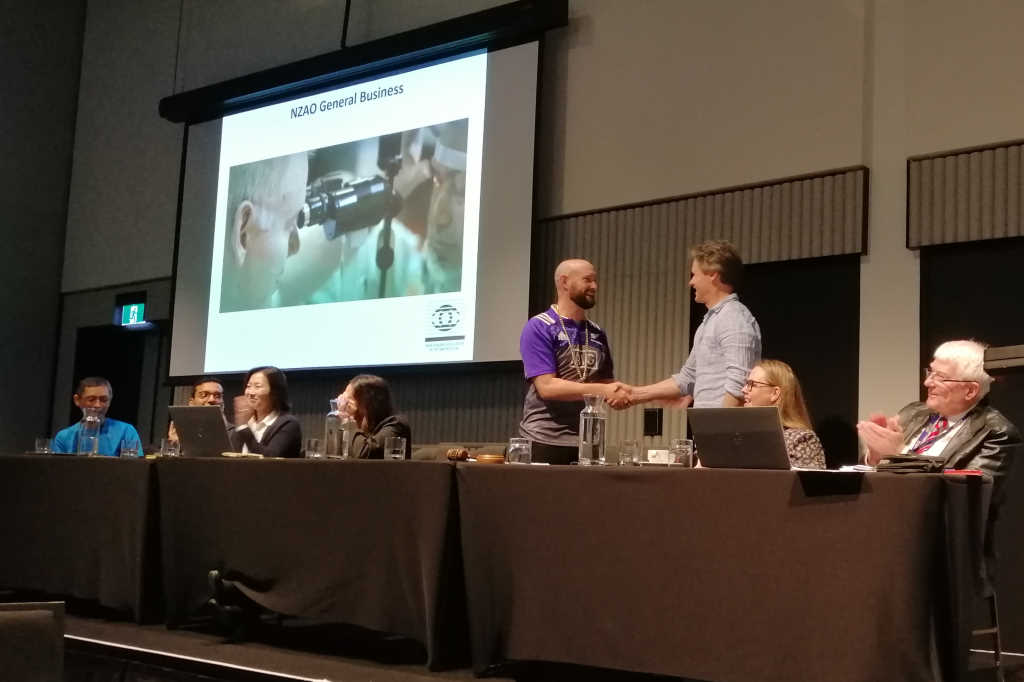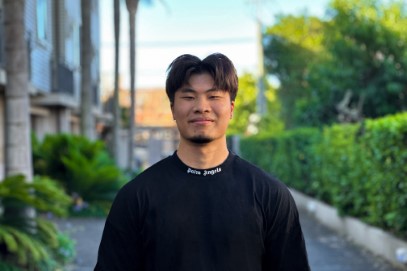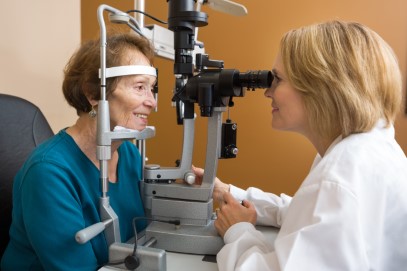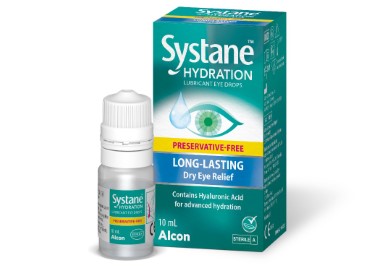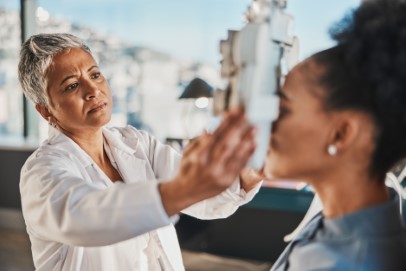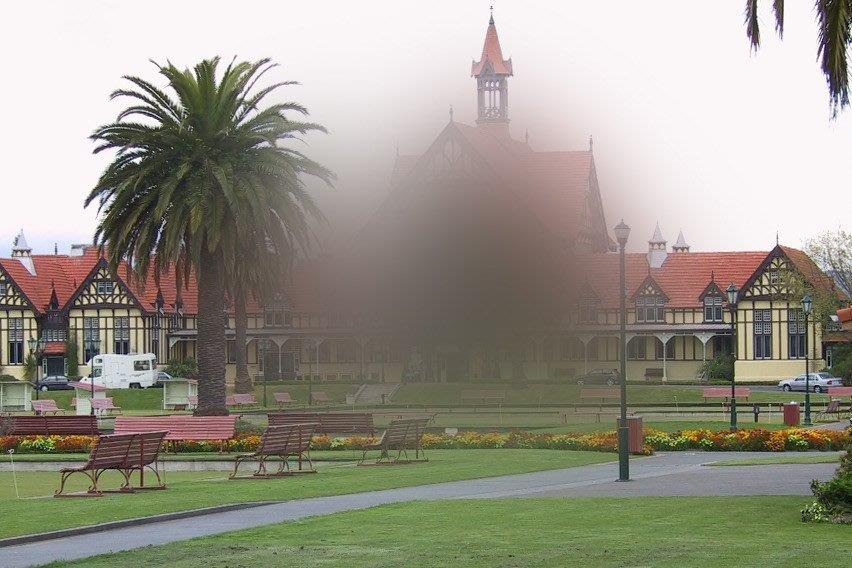NZAO returns to Christchurch
It has been a damn long time between drinks! Christchurch last hosted a New Zealand Association of Optometrists (NZAO) conference in 2009 – pre-earthquake and pre-global pandemic. So, given that this year’s return showing was held in Te Pae, across the road from the now-demolished 2009 conference location, NZAO’s 92nd annual conference was not just significant but poignant.
While NZAO conferences are known for their variety, I was attending primarily to listen to keynote speaker Dr Marilyn Vricella, associate clinical professor at SUNY College of Optometry. Teaching paediatric optometry and binocular vision, she is also the principal investigator for the Paediatric Eye Disease Investigator Group (PEDIG). One of the most satisfying aspects of my job is examining children; it is also one of the most frustrating. Dr Vricella’s lectures were a mix of revision, experienced tips and practical workshops (complete with babies and toddlers) designed to decrease those frustrations. Her review of the PEDIG studies into amblyopia treatment and the special-needs paediatric examination was heavily evidence-based and provided techniques that could be used immediately.
While Dr Vricella’s workshop on vision therapy techniques was fun, I would have enjoyed learning about the evidence (if any) on the success of these training techniques. The controversial depths of vision therapy would benefit from more assessments like the Convergence Insufficiency Treatment Trial.
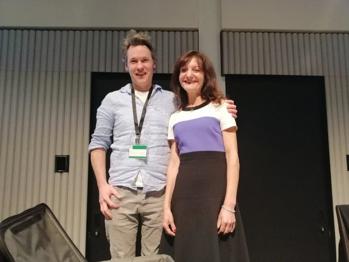
NZAO president Callum Milburn and keynote
speaker A/Prof Marilyn Vricella
The University of Auckland’s (UoA’s) Dr Tina Gao shared her PhD work, which may not have had the result she was looking for her amblyopia-treatment-designed video game but did show that older amblyopes have the potential to improve their acuity, unintentionally confirming PEDIG’s findings in this area. Another UoA researcher, Lynn Mascarenhas, is surveying how community practice is treating amblyopia; her results may be skewed after this information-packed conference.
Further education came courtesy of local paediatric and anterior segment ophthalmologist Dr Elizabeth Conner. With expertise in paediatric keratoconus, she reviewed recent New Zealand statistics which confirmed our practice-based evidence that Māori and Pacific people are at a higher risk of developing the disease and more likely to present with a more advanced form. The challenge for optometrists is to diagnose the condition early and to be suspicious when faced with risk factors such as ethnicity, genetic conditions, lid disease, eye rubbing and family history.
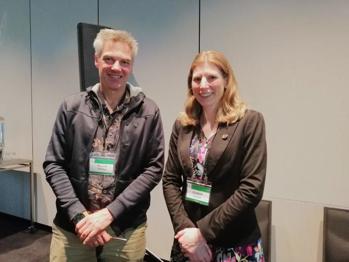
Richard Johnson and Dr Elizabeth Connor
Moving away from paediatric care, medical retina specialist Dr Ainsley Morris provided a highly entertaining and informative case-based quiz. Rather than simply discussing disease, Dr Morris empowered the audience to use pattern recognition when confronted with retinal pathology. Christchurch Hospital-based optometrist Anthony Nevett, who trained under Dr Morris, presented two further cases of retinal pathology.
Glaucoma consultant Dr Rahul Dwivedi, who was unfortunately called to India, remotely discussed the results of Micropulse and selective laser trabeculoplasty efficacy and the early outcomes of minimally invasive glaucoma surgery at Christchurch Hospital. The local content was completed by Lora Parson, who presented case studies from an orthoptist’s perspective.
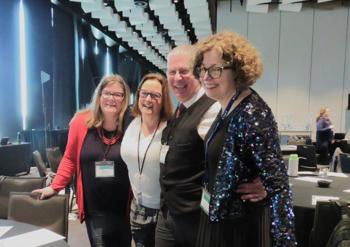
Nicola Livingstone and Sally Hicks with speakers
Anthony Nevett and Dr Ainsley Morris
Let’s get ethical
Cultural and ethical continuing education points were among the conference’s drawcards, with two lectures offered by business owner, NZAO counsellor, PhD candidate, mother and all-round over-achiever Renata Watene. The big message is that cultural awareness and cultural responsiveness involve ongoing education and the concept of being ‘culturally safe’ is an outdated one. Not upskilling in this area will result in poorer healthcare for our Indigenous patients, thus poorer outcomes for keratoconics, diabetics and younger cataract patients, and poorer outcomes for Indigenous patients lead to poorer outcomes for all! Exploration into colonisation, Te Tiriti o Waitangi, unconscious bias and inequity can be unsettling but that was, perhaps, the point. Underscoring all this was UoA’s Jaymie Rogers’ presentation on her research on access to eye health services in an underserved Auckland community.
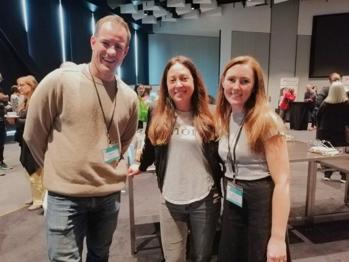
Ryan O’Connor, Renata Watene and Kiw Stedman
Occasionally a conference has a lecture that clearly resonates with the entire audience. So it was with Professor Lynley Anderson’s ‘Making mistakes in clinical practice’. Prof Anderson is the deputy dean of the Dunedin School of Medicine and completed her PhD on ethics. In an era of high anxiety, her lecture was surprisingly kind and fair, which is how mistakes in clinical practice should be treated. The medical system’s current approach to error is a more tolerant and progressive one than I was trained under. Prof Anderson argued that humans make mistakes and humans will complain and that a ‘systems approach’ to error (when good people make poor choices) has better outcomes than a ‘person approach’ (where an error is attributed to some sort of moral failing). With the former approach, we are more likely to retain good clinicians, have better patient outcomes, learn more, practise with intent rather than protectively and enjoy our craft. Concentrate on informed consent and good communication with patients, avoid isolation of all types and have a good lunch break to avoid the dreaded HALT (hungry, angry, late or tired).
It would be remiss of me not to mention the faultless conference organisation of NZAO’s Rochelle van Eysden, Wilson Sue, Grant Firth and Peter Anderson. Optometry conferences have rightly been pathology heavy since the profession gained ocular therapeutics accreditation, but this NZAO conference offered a range of topics and I, with my ancient, physics-based optometry degree, welcomed that. Perhaps this diversity is why the key learnings that have stayed with me are in pathology and ethics.
Roll on NZAO Wellington 2024! In the meantime, keep in touch with your colleagues and have a decent lunch break.
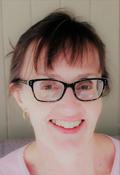
Catherine Small is a therapeutically qualified optometrist practising in Christchurch. Her early 1980s BOptom cohort was notorious for being the first year of predominantly female students (77%). An uproar in the profession, and in this magazine, ensued. Shockingly, all the female students graduated without becoming pregnant! More recently, Catherine studied under two of this conference’s guest speakers, optometrist Anthony Nevett and Dr Rahul ‘nerves-of-steel’ Dwivedi.










